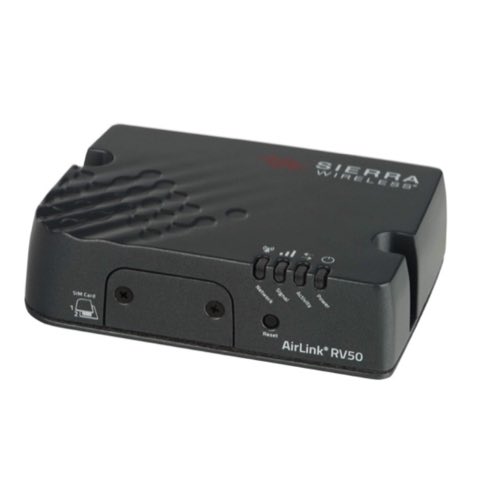RV50X Routers

Semtech RV50X Routers are part of Semtech's AirLink series, which is known for its commitment to high-quality and high-performing IoT solutions. The RV50X, in particular, stands out for its ultra-low power consumption, high-speed LTE Advanced connectivity, and a rugged design that can withstand harsh industrial conditions.
One of the defining features of the RV50X is its energy efficiency. It boasts the industry’s lowest power consumption, making it ideal for solar or battery-powered applications, such as remote monitoring systems or industrial infrastructure. It's built to provide robust, reliable, "always-on" connectivity, despite challenging conditions. This makes it particularly well-suited for critical infrastructure, like utilities and industrial equipment.
More Information about Semtech RV50X Routers
The RV50X integrates Semtech's AirLink Management Service (ALMS), a cloud-based platform that enables users to remotely monitor, manage, and control RV50X devices from any location. With ALMS, users can access real-time analytics and reporting, allowing for proactive identification and resolution of network issues. This powerful feature helps to minimize disruption and maintain constant and reliable connectivity, ensuring smooth operation of critical services.
Semtech RV50X routers represent a blend of reliability, efficiency, and superior connectivity. Their unique low-power operation, combined with high-speed LTE Advanced connectivity and robust design, makes them a valuable tool for a wide range of applications. The RV50X is more than just hardware; it's a strategic partner for organizations seeking dependable, high-performance networking solutions that also prioritize energy efficiency.
Basics of Switches, Routers & Hubs
Ethernet hubs, switches and routers connect computers to networks, devices and other computers.
Ethernet hubs are the least intelligent of the three devices. They simply take any message that is received and transmits it to every other device connected to that hub. For example, if CPU 1 on a network wants to send a message to CPU 5, it will send that message through the hub.The hub will then take that message and send it out to every connected device on that hub regardless of the intended target. When CPU 5 receives that message and wants to respond, it will send its response through the hub which sends it to every connected device. Ethernet hubs do not manage any data that is sent and tend to bog down networks. They also do not offer much security for the network. For these reasons, Ethernet hubs are are being replaced with network switches.
Switches transmit data from one device to another on the same network. Unlike a hub, switches use a switch table to learn where data came from and where to send it. Switch tables store Mac addresses and device ports. By storing this data, a switch can operate more efficiently than a hub, greatly reducing the traffic within the network.
Routers transfer data between devices while learning the location of those devices within the network. They are also a junction between two or more networks. An example of this would be a home router where the home network is connected to the Internet. Another example would be when the router connects two or more networks with different business functions. In addition to connecting two or more networks, a router offers important security features that help protect the network.

